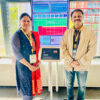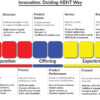
A colleague of mine wrote to me, “Prahlad, I was in the Gulf for a long time and have now returned home for good. There was no opportunity to learn there. Can I learn now, at the age of 55?”
My answer was, “Of course, yes. Age is only a number. It’s the mindset that matters.”
How do we understand one’s mindset, and how do we change it from passive to proactive?
Understanding mindset starts with defining where we are, what we want, and feeling the pain of not having it. If we are not clear and cannot articulate precisely what we want, we certainly cannot achieve it. So, we have to set our target, decide that we will make it our reality, and then actualize it through our commitment to action over time. Pain is a great motivator for most people.
During my MBA, I read about an exciting concept in M.J. DeMarco’s book, “The Millionaire Fastlane,” which is about cracking the code to wealth and living rich for a lifetime. The SSF method, standing for The Sidewalk, Slow Lane, Fast Lane Method for generating wealth, is now widely used in marketing.
- The Sidewalk
People on the Sidewalk are not ready to lead a proactive surgical career. They ignore all the advantages and often fail to perceive the pain. Despite having some painful symptoms in their work and other areas of life, they try to ignore them, believing that’s just the way it is.
To move from the Sidewalk to the Slow Lane, they need to clearly understand the problem and its costs. They need education, illumination, insight, or revelation. Regular participation in live surgical or cadaver dissection courses will be a great motivator. Once they recognize the problem, they are open to the right solutions.
- The Slow Lane
It’s innate human nature to constantly find solutions for problems. Once a person is aware of a problem and its consequences, they start looking for ways to resolve it. First, they seek proven methods or processes, then mentors they can trust. Once methods and mentors are available, moving to the Fast Lane is easy.
Todd Herman, a performance advisor to athletes, leaders, and public figures, and the award-winning author of “The Alter Ego Effect,” said, “If you want something, go get it. If you want something faster, get it with a great mentor.”
- The Fast Lane
People who understand their problem and identify a potentially viable solution tend to stay firmly in the Fast Lane. However, remaining in the Fast Lane for an extended period is challenging. People often enter a comfort zone. It is often said nothing fails like success. What worked earlier may not work in the future, leading to failure. Unless they keep a vigil, it is easy to drift back into the Slow Lane. We need to keep innovating and updating ourselves to find new ways to remain relevant.
It takes four steps to reach mastery: Feel the pain. Identify which lane you are in. Follow methods and mentors. Finally, keep reinventing.
With best regards,
Prof. Dr. Prahlada N.B
22 Feb 2022
Chitradurga.

















Leave a reply